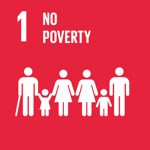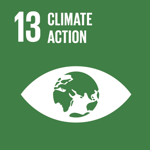Drought Tolerant Maize
 Mexico
Mexico
 Colombia
Colombia
 Honduras
Honduras
 Nicaragua
Nicaragua
 Panama
Panama
 Peru
Peru
Executive Summary
Maize is a key crop in the lower tropics of Latin America, providing up to 40% of protein and 50% of calories in the diets of some Central American countries. There are more than 4.0 million hectares planted with maize in Central America, Colombia, Venezuela, Peru, Ecuador and Bolivia, with an average yield of approximately 2.5 t / ha. Climate change will cause increases in temperatures, variations in precipitation and a greater frequency of extreme events. Frequent droughts can cause losses of up to 35%.
On the other hand, increases are predicted in the incidence of maize diseases, especially ear rot caused by Aspergillus flavus and Fusarium verticillioides, fungi that contaminate the grain of maize with mycotoxins, including aflatoxins and fumonicins, with serious effects on human and animal health.
The project developed and distributed maize varieties that are drought tolerant and resistant to ear rot fungi that contaminate the grain with mycotoxins. It had the following components:
- Development of maize varieties that combine resistance to rot ear, accumulation of mycotoxins and combining drought tolerance and resistance to diseases and mycotoxins.
- Participatory evaluation and validation of technologies.
- Strengthening the capacity of extension agents, researchers and students, in the tools and technologies to develop drought resistant maize germplasm.
- Dissemination of technology and information.
The technological solution
Climate change could exacerbate the negative effect of droughts on maize productivity, as well as the increased occurrence of fungal diseases. White maize is generally used for human consumption, while hard yellow maize is used for animal feed, mainly for pigs and poultry. The project sought as a technological solution the development of hybrids, varieties and maize lines of greater productivity and with tolerance to droughts and resistance to rotting of the ears caused by fungi of the genus Aspergillus and Fusarium. These fungi generate aflatoxins and fumarins that cause serious conditions, as they are carcinogenic or affect the immune system. The benefits of the new varieties, then, are not only reflected in higher productivity but in benefits for human and animal health.
Results
The project selected hybrids, varieties and lines with tolerance to drought and resistance to ear rot, and with yields up to 20% higher than the commercial control and with <12% severity of ear rot. Four varieties of maize were released in Honduras (three white and one yellow); a white variety in Colombia; two varieties (one white and one yellow) and one yellow hybrid with resistance to ear rot in Nicaragua; three varieties in Panama (two yellow and one white) and three hybrids were validated in Peru.
190 segregating populations were identified that combine elite maize germplasm drought tolerant and resistant to ear rot. Eleven pure maize lines were selected that combine drought tolerance and resistance to ear rot and mycotoxins.
A network of researchers, technicians with the capacity to develop germplasm resistant to biotic and abiotic adverse factors, was established in the member countries of the consortium.
The methods for mycotoxin analysis have been well developed and the members of the consortium were trained in three training events carried out with researchers who are members of the Consortium in Peru, Panama and Colombia. Two Master of Science theses were conducted and six research papers were presented at an international meeting, winning two awards at the session on maize.
Beneficiaries
The direct beneficiaries are the dozens of researchers and technicians from the five countries who participated in the different activities of the project and who acquired new knowledge. Also, the two graduate students who completed their master's theses on the project and the hundreds of researchers and professionals who participated in the international congress where the results of the project were presented.
Sustainable Development Goals



Participating Organizations
Executor
- Centro Internacional de Mejoramiento de Maíz y Trio (CIMMYT) - México
Co-executor
- Corporación Colombiana de Investigación Agropecuaria (CORPOICA) - Colombia
- Dirección de Ciencia y Tecnología Agropecuaria (DICTA) - Honduras
- Instituto de Innovación Agropecuaria de Panamá (IDIAP) - Panamá
- Instituto Nacional de Innovación Agraria (INIA) - Perú
- Instituto Nicaragüense de Tecnología Agropecuaria (INTA) - Nicaragua




